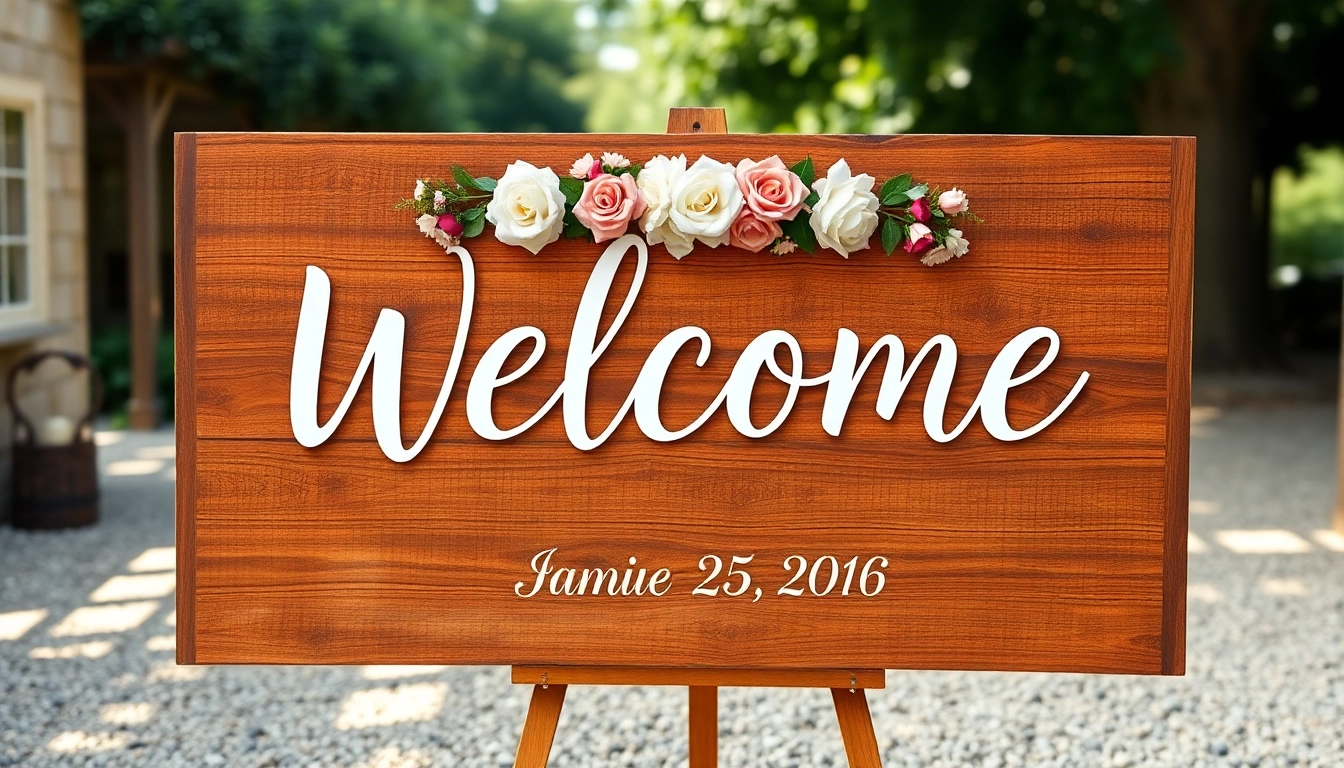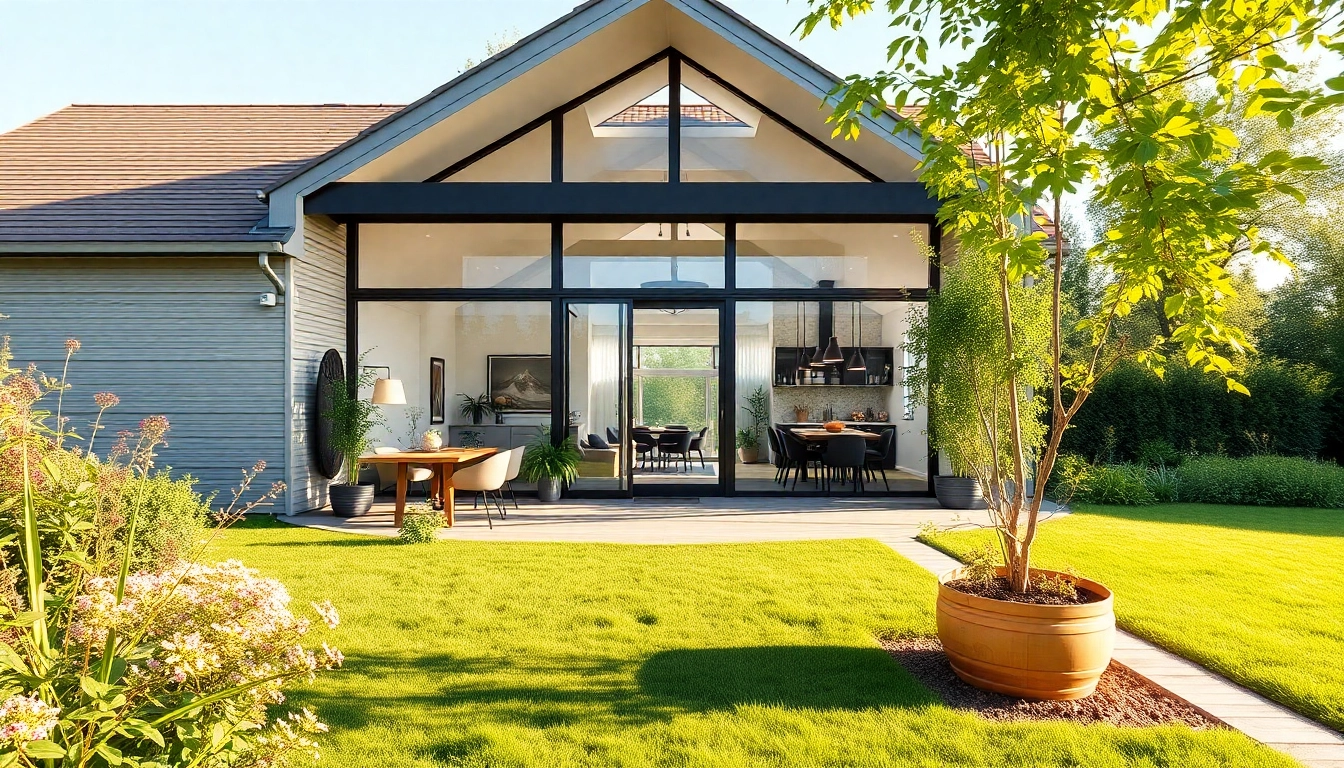Understanding the Purpose of a Wedding Welcome Sign
The Role of Welcome Signs in Wedding Decor
A wedding welcome sign is more than just a decorative item; it is a vital element of your overall wedding aesthetic that serves to greet guests and set the tone for your celebration. Positioned strategically at the venue entrance or reception area, a well-designed welcome sign communicates warmth, hospitality, and personality. It acts as the first visual cue that guests encounter, offering a glimpse into the couple’s style—whether formal, rustic, whimsical, or modern—and establishing the mood that will permeate the event.
In today’s wedding planning landscape, signage has evolved from simple, functional displays to creative opportunities for personalization and branding. Wedding welcome signs contribute to the overall decor, complementing floral arrangements, lighting, and table settings. Theyalso serve practical purposes—guiding guests to the ceremony site, reception area, or designated activities—making them an indispensable part of a cohesive wedding experience.
According to industry insights and expert wedding coordinators, nearly all weddings incorporate some form of signage, with welcome signs being the most prevalent. This is highlighted by trends explored in leading sources such as The Knot, emphasizing their importance in creating memorable, photo-worthy moments.
How a Sign Sets the Tone for Your Wedding
A wedding welcome sign acts as an informational and emotional primer for your guests. Its design, wording, and placement all contribute to the atmosphere you wish to cultivate—from elegant and sophisticated to casual and fun. For example, a sleek acrylic sign with minimalist fonts suggests modern elegance, while a charming hand-painted wooden sign evokes rustic charm.
The tone of the signage often mirrors the wedding theme. If your wedding exudes relaxed Bohemian vibes, a handcrafted fabric or chalkboard welcome sign with playful lettering can amplify the laid-back feel. Conversely, a classic black-and-white calligraphy on high-quality foam board can reinforce a timeless, luxurious ambiance.
Choosing the right style and message on your sign helps guests immediately understand your wedding’s character and expectations, making them feel more connected and comfortable from the moment they arrive. It’s also an opportunity to include subtle humor, heartfelt sentiments, or travel directions—tailoring the experience to your personality and vision.
Key Elements to Convey on Your Sign
A successful wedding welcome sign balances informative content with heartfelt expression, all while matching your aesthetic. Typical elements include the couple’s names, wedding date, and a warm greeting such as “Welcome to Our Wedding” or “Happily Ever After Begins Here.”
However, modern couples often personalize these signs further by including an engaging message—some humorous, some sentimental—such as “Love is Brewing” or “Come Unplug, Be Present.” Incorporating hashtags for social media sharing, or instructions for bridal parties or specific events (e.g., “Please Sign Our Guest Book!”) can also enhance guest experience.
Design-wise, clarity and readability are paramount. Use contrasting fonts and colors, ensure the text size is legible from a distance, and prioritize high-quality materials to avoid warping or damage. When in doubt, consult trend reports and expert guides like those on Brides for inspiration.
Design Ideas and Customization Options for Wedding Welcome Signs
Popular Materials: Wood, Acrylic, Foam Board
Material choice directly influences the look, durability, and budget of your wedding welcome sign. Each option offers unique aesthetic benefits and practical qualities that cater to different wedding styles.
- Wood: Classic and warm, wood signs evoke rustic charm or vintage elegance. They can be stained, painted, or left natural and are highly customizable with engraving or hand-painted designs. Wooden signs are sturdy, long-lasting, and photos beautifully, making them a favorite for outdoor or country weddings.
- Acrylic: Modern and sleek, acrylic signs offer a glossy finish that enhances colors and graphics. Options include clear, frosted, or mirrored finishes. Acrylic signage is lightweight, resistant to weather, and lends a high-end feel suitable for contemporary or urban weddings.
- Foam Board: Cost-effective and lightweight, foam board signs are excellent for versatile looks and quick customization. They are easy to transport and set up, ideal for temporary or budget-conscious weddings. They can be printed with high-resolution graphics or hand-painted for a bespoke touch.
Choosing the right material aligns with your wedding theme, venue, and priorities—whether durability, appearance, or affordability.
Styling Tips to Match Wedding Themes
Your welcome sign should seamlessly integrate into your wedding decor. For a rustic outdoor wedding, consider distressed wood with floral embellishments; for a minimalist, modern wedding, opt for clean lines with monochrome acrylic or sleek metal finishes.
Color palette coordination is crucial. Match the sign’s colors with your wedding scheme—pastels, metallics, earth tones, or bold hues—to create visual harmony. Incorporating elements like flora, ribbons, metal accents, or string lights can also enhance the theme and make the sign a statement piece.
Typography plays a vital role. Script fonts add elegance and tradition, while sans-serif fonts lend a contemporary vibe. Mixing fonts can add personality, but always prioritize readability.
For themed weddings like vintage, seaside, or garden, customize shapes, borders, and graphics accordingly. For example, seashell motifs for beach weddings, or vintage ornate borders for a Victorian theme.
Adding Personal Touches with Fonts and Graphics
Personalization elevates a wedding welcome sign from generic to memorable. Select fonts that mirror your style—calligraphy or handwritten scripts convey romance; bold modern fonts showcase contemporary elegance.
Graphics, illustrations, or monograms further personalize the sign. Couple’s initials, custom illustrations of your venue, or floral motifs tailored to your wedding theme can make the sign uniquely yours.
Digital tools and professional designers can help create custom designs that balance aesthetic appeal with clarity. On-site printing or hand-painting can add artisanal charm, especially suited for rustic or boho themes.
Choosing the Right Size and Placement
Optimal Dimensions for Visibility and Aesthetics
Size matters. Common dimensions include 18×24 inches and 24×36 inches, with larger sizes preferred in outdoor or wide-open spaces to ensure visibility. For indoor venues with tight spaces or smaller entranceways, slightly smaller signs may suffice.
Consider sightlines—your sign should be easily seen without overwhelming the aesthetic. A sign that is too small may get lost in the decor, while an overly large sign can dominate the space unnaturally.
Weight and material influence portability and installation. Foam board signs are lightweight, perfect for larger sizes and quick setup, while wood or acrylic signs may require sturdy stands or wall mounting.
Strategic Locations for Displaying the Sign
Position your wedding welcome sign at the entrance of the ceremony or reception site, where guests naturally gather. Ideal placements include the main driveway, entrance gate, or at the front of the ceremony area.
In indoor venues, place the sign near the door, on an easel, or within a designated welcome area. For outdoor weddings, consider multiple signs—one at the driveway, another at the ceremony entrance, and perhaps a directional sign guiding guests to parking or restrooms.
Ensure the sign is at eye level and unobstructed, with adequate space around it for guests to read comfortably. Use complementary decor, such as floral arches or lanterns, to draw attention to the sign.
Lighting and Background Considerations
Proper lighting enhances the visibility and aesthetic impact of your welcome sign. Natural daylight is ideal for outdoor settings, while ambient lighting or spotlights can highlight signs in evening or indoor settings.
Background surroundings matter. Place signs against contrasting or neutral backgrounds to make the design pop. For outdoor signs, avoid cluttered or overly busy backgrounds that can distract from the message.
Consider adding light fixtures such as string lights, uplights, or lanterns to illuminate the sign, especially for evening receptions. Ensure that lighting does not cast harsh shadows or cause glare that hampers readability.
Practical Tips for DIY and Professional Wedding Sign Creation
DIY Techniques for Custom Wedding Welcome Signs
DIY offers a personalized touch and potential cost savings. Basic techniques include painting or lettering on wood, fabric, or foam boards, and using vinyl decals or stencils for clean, crisp designs.
Popular DIY methods:
- Hand Lettering: Use chalk or paint pens on a prepared surface, choosing fonts that match your style.
- Stencil Painting: Apply stencils for precise lettering or graphics, especially for larger signs.
- Decal Application: Use printable vinyl or adhesive decals for intricate designs, then seal with a protective coating.
Gathering quality supplies, practicing techniques beforehand, and considering weatherproofing are key to durable DIY signs. For outdoor use, sealants or waterproof paints extend longevity.
Working with Vendors for Custom Orders
Partnering with professional sign makers ensures high-quality results, especially for large, intricate, or high-end signs. Share your vision, preferred materials, and sample images to guide the design process.
Request quotes, turnaround times, and samples before committing. Many vendors offer online design tools and mockups to visualize the end product, reducing surprises.
Communication and clear specifications—size, color palette, font choices, placement, and delivery schedule—are vital. Reviews and portfolio assessments help gauge vendor reliability.
Ensuring Durability and Ease of Setup
To maintain a wedding sign’s pristine appearance, choose weather-resistant materials for outdoor venues. Sealants, UV-protective coatings, or laminated surfaces shield against moisture, sun, and dirt.
Consider portable stands, easels, or wall mounts for easy setup and removal. Weighting the base or using sturdy stands prevents toppling, especially in windy conditions.
For DIY signs, attach hooks, rope, or string to facilitate hanging or anchoring. For professional signs, inquire about installation options and complementary accessories.
Enhancing Guest Experience with an Impactful Welcome Sign
Ways to Personalize Your Message
Personalization transforms a generic sign into an engaging focal point. Craft messages that reflect your personalities and love story. Examples include:
- “Join Us in Celebrating Love — [Couple’s Names]”
- “Today We Wed! Welcome to Our Happily Ever After”
- “Love Is Brewing — Welcome to Our Wedding”
- “He Said, She Said: Welcome to Our Wedding!”
Including meaningful quotes, song lyrics, or inside jokes can deepen emotional impact and create memorable moments for guests.
Incorporating Interactive or Themed Elements
Interactive signs encourage guest participation. Consider attaching chalkboard sections for guest messages, or incorporating QR codes linking to wedding hashtags, maps, or event schedules.
Themed signs, embellished with your wedding motifs—floral wreaths, seashells, vintage illustrations—create visual continuity. Using customized graphics that tie into your wedding theme makes the sign a centerpiece.
Measuring Success: Guest Engagement and Photos
An impactful welcome sign often becomes a popular photo backdrop, encouraging guests to share moments on social media. To maximize engagement:
- Use attractive lighting and framing to make the sign camera-ready.
- Incorporate hashtags or prompts like “Take a photo with us!”
- Position the sign at strategic angles for candid shots.
Monitoring hashtags, guest photos, and feedback provides insights into how well your sign resonated and contributed to the overall guest experience.



